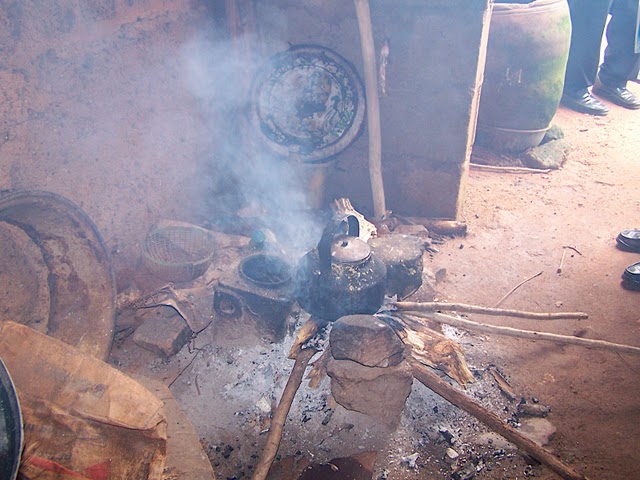In the 1950’s, American’s would have said, “Environment? What environment problems are you talking about? We got sunlight, water, and air to breathe, we will be just fine.” The post-industrial mindset was more of the same as America’s mindset during the turn of the 20th century.
Now in the 21st century, we are looking back and saying, “What were we thinking?” The movement towards clean fuels and sustainability practices is showing improvements in air quality and actually saving costs for companies and individuals throughout the world. Why didn’t we think like this before?
With the technological advancements present today, America is able to produce alternative energy and practice sustainable, environmental remedies cheaper than prior decades, allow us to invest in the future. But the chances are you are still living with poor air quality in your home, as new practices in old homes often takes time to implement. Maybe after understanding the short and long term effects of poor air quality within your home, you will start to take some positive habitual steps in improving your environment.
Control the Moisture in Your Home
New technologies allow homeowners to grasp greater control of their moisture content within their homes, even with the click of a button. But some of the old homes are the deadly ones, providing a breeding ground for mold, bacteria, viruses, pollen, and dust mites. Depending on where you live, you may find these problems occur more frequently – places such as Florida, Washington, and other coastal lying areas.
An increase in moisture within your home will cause infections and trigger asthma attacks. In addition, you may find yourself or your children losing energy due to poor air quality – we are all only as good as our environment allows.
If you have ever been to ‘Mile-High Stadium’ in Denver you will know what I am talking about. The ability to breathe in a home with poor air quality due to pollutants has the same affect. Make sure to get a professional into your home to check for mold and measure moisture content per cubic foot and wash all of your sheets and bedding regularly.
Watch Out For Radon and Asbestos!
Radon is the send leading cause of lung cancer in the U.S., only behind smoking and second-hand inhalations. It is important to test your home for radon exposure yearly, to make sure you are not exposing yourself over a long period of time because……..it will kill you. Over 20,000 lung cancer deaths each year are attributed to radon exposure. Radon is a naturally occurring radioactive gas, entering through cracks in floors and walls, as well as drains and other exposed leaks.
In addition, Asbestos has become a large phenomenon in America over the last decade due to drywall and other building materials imported for constructed from other countries carrying the deadly mineral. When inhaled, the mineral will instantly beginning scarring the lungs causing lung cancer and Mesothelioma. To avoid exposure, use a sealant directed by professionals within your home, and if you are buying a new home make sure inspectors do a thorough job in inspecting for this mineral.
Tobacco Smoking and Secondhand Problems
Believe it or not, American’s are known to smoke within their homes, particularly in the winter months in northern states throughout the country. Although the immediate logic tells you, “I’m in another room, away from everyone else, how much harm can it do?”
Don’t believe that logic because that is your nicotine buzz making decisions for you. Secondhand smoke is just as dangerous as smoking itself, putting everyone in the area at risk for lung cancer – especially non-smokers with no tolerance. Smoke is like any other gas in that it moves through space until conversation or dissipation. With tobacco smoke, the actual tobacco is not what is killing you, it is the tar and other chemical products within the cigarette causing harm to your body and the smoke will travel through the house, around the house, and actually store within the walls of a home, causing long term issues with air quality.
Even smoking immediately outside the house is bad for surrounding inhabitant, as the smoke may be sucked into an intake valve or seep through walls throughout the exterior of the home if exposure is near the smoker.
Best advice is to smoke at least 30 feet from a home – 50 feet if you are not in the middle of the street at that point – or lose the habit and pick up gum chewing.
Understanding Your Health
1. Poor air quality causes asthma: Over the last decade, asthma has increased approximately 70%, particular in young children.
2. Allergies: Over 40 million individuals in the U.S. are affected by allergies and home air quality environments often increase the problem or cause the problem in the first place. Invest in the proper techniques and prevention through the use of sustainable practices or inspection.
3. Know Your Area: If you live in Arizona, your likeliness of over-moisture exposure is unlikely, as the air is naturally dry in those areas. Just make sure to control your air conditioning unit properly, as condensation will seep into walls and create mold over time. If you’re in a big city with high pollution emissions, invest in the best air filtration system for your home because air quality and energy levels are very directly linked.
Featured images:
- License: Creative Commons image source
Matthew Hall is a freelance writer who lives in Orlando, Florida. He highly recommends AirCleaners.com if you in the market for a home prurification system.





